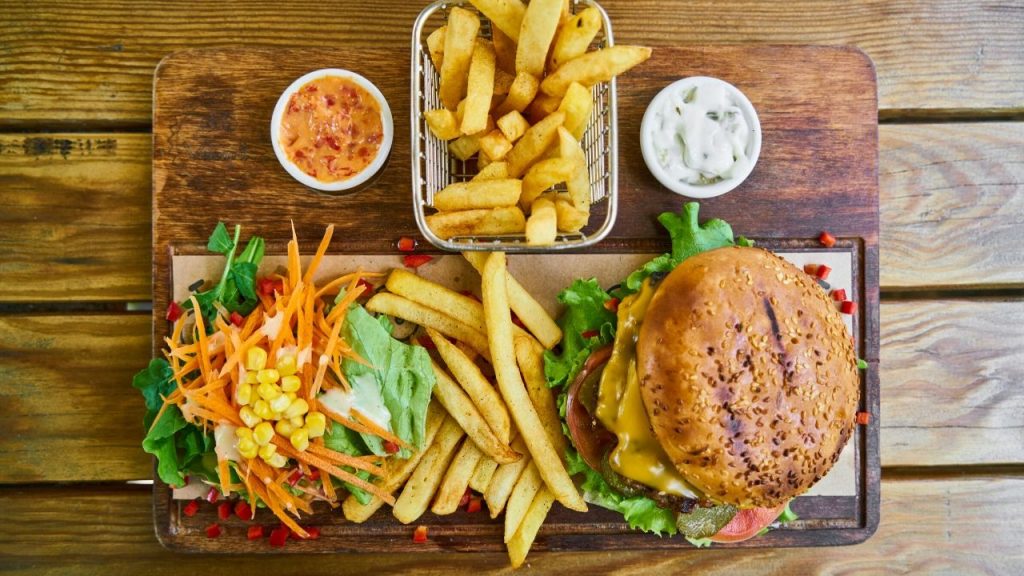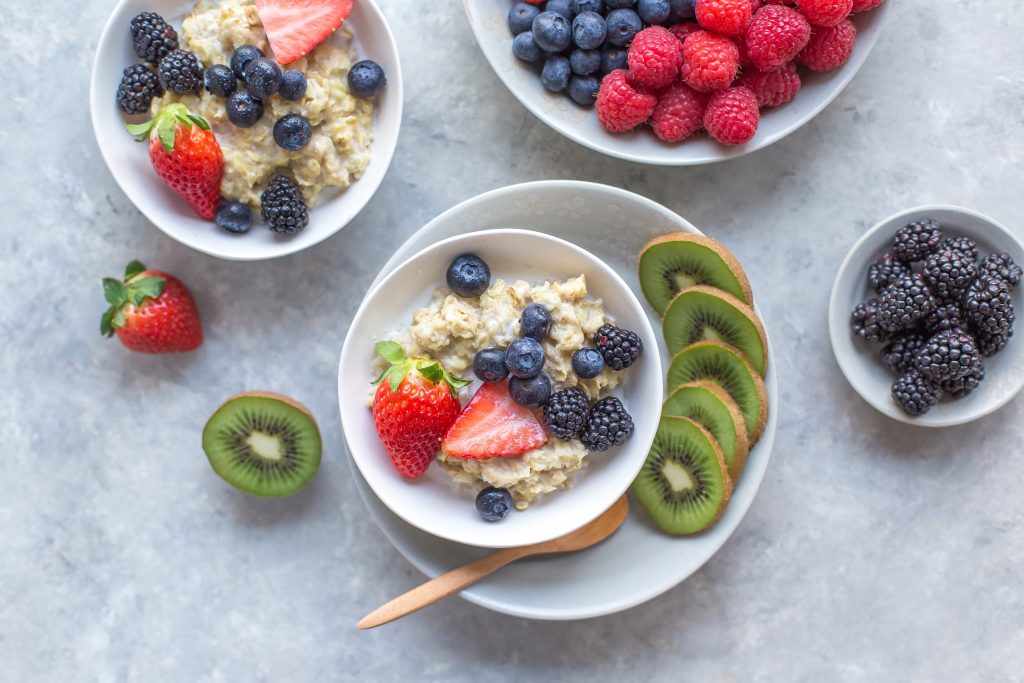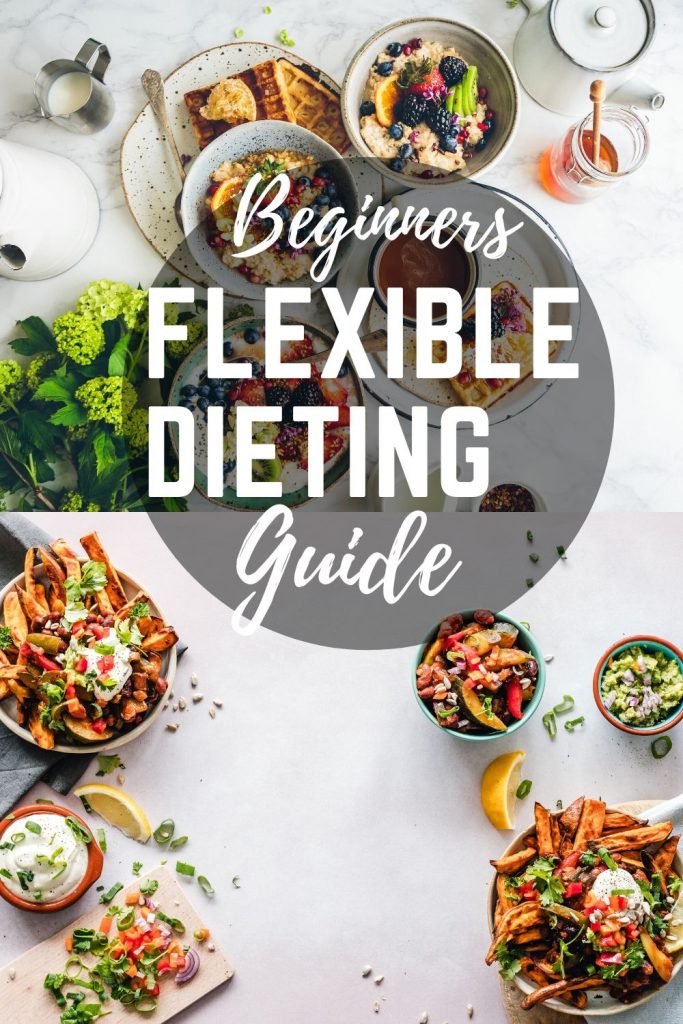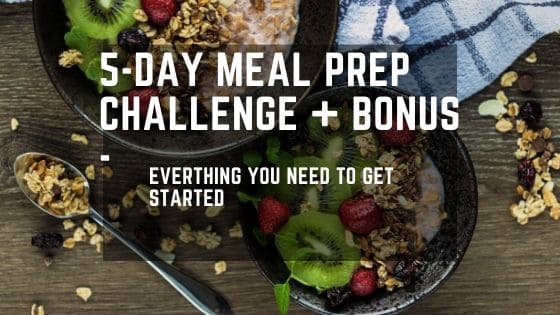Last Updated on December 4, 2020 by TheMealPrepNinja
Flexible Dieting
Have you heard of flexible dieting? We all are looking for easy to follow diets that will help us lose that extra weight and make us healthy, but the most difficult part about dieting is sustaining it in the long run.
There are so many diet options in the market like Keto diet, GM diet, No carb diet that is confusing to choose one diet plan and stick to it for a long time.
Diet Restrictions
The majority of diets have so many restrictions and compel us to eat our not so favorite foods like plain green veggies and fruits. This type of diet is hard to sustain long term. And will only bring you temporary success.
Flexible dieting is Becoming Popular
That’s why, nowadays, flexible dieting is becoming a popular diet for weight loss. So let’s understand what it is and how we can follow it to attain our weight goals and continue to eat the foods we love.
What is Flexible Dieting
Flexible dieting allows you to eat whatever you want to, as long as you are tracking your consumption of macronutrients (macros) and achieving the macros required. Macros are nothing but Protein, Carbohydrates, and Fats that are essential for a healthy and fit body.
Macro Calorie Calculator
Now the flexible dieting plan does not consider any foods as bad foods and gives you the freedom to choose your sources of macros as long as your consumption is within permissible limits. You can figure out your Macro Calorie Calculator using our Calculator.
What Can You Eat
So it doesn’t matter if your protein comes from KFC chicken or a boiled egg as long as you hit your macros target. As this diet is independent of sources of nutrients, you do not have to wait for cheat days and can freely eat your favorite foods.

Balanced Diet
I would recommend eating a balance of both low-calorie dense foods and higher calorie-dense foods. You also would not want to eat anything but high-calorie dense foods because it will be harder to stay below your daily calorie number.
Crash Diets Don’t Work
In many cases, crash dieting plans, or plans with cheat days lead to overeating amongst the followers and can bounce back their weight quickly. Some of the restricted diets also affect the followers psychologically, resulting in anxiety and stress. So it is advised that you do not go for such restrictive dieting plans that can have negative effects on your overall well being.
Easier to Follow
As a flexible diet does not force you to stick to particular meal plans, it is becoming popular in young people who love to indulge in all types of cuisines.
Where to start with Flexible Dieting?
The first step in starting your flexible dieting is to calculate your energy expenditure per day and to determine how much macronutrients you need per day. This can be calculated easily by the use of a Macros calculator available on our website Macro CalorieCalculator, or you can do it yourself. Once you know your daily Macros targets or if it fits your macros, just make sure you stick to them to achieve the desired results.
What Are Macronutrients?
Typically the thumb rule is that there Fats are 9 calories per gm, Carbohydrates are 4 calories per gm, and Proteins are 4 calories per gm. Once you know how much calories you need in a day depending upon your level of physical activity, you can easily calculate your Macros. You can track your daily consumption of Macros using mobile apps like MyFitnessPal that determine macros for the type of food you eat. Your macros target will depend on your weight goals, so be clear with your weight goals. You can also use flexible dieting for weight gain by increasing your macros consumption than what is permissible.
Simple Macro Calculator
Extra Resources
If You are Looking for All Access to Nutrition and Fitness check Out Bobybuilding’s All Access.
Calculating Macros for Flexible Dieting
You can calculate your calories by using standardized equations that depend on factors like age, weight, height, and sex. Once you calculate your calorie needs, you can use them to calculate your macros distribution based on the thumb rule mentioned above.
What’s Next
After knowing your macros distribution, you can tweak it depending upon your weight goals by reducing it proportionately. All these standard calculations are available on our website Macros Calorie Calculator, and you can plug in your variables to get your customized macros distribution. Remember that it is necessary to track macros for every meal, including snacks, to get the right results.
Benefits of Flexible Dieting
Flexible dieting is very easy to follow and does not restrict you from eating your favorite foods. Calculating and tracking your macros intake is easy and can be done on the go, which makes it a DIY diet plan that does not need any professional help.
This diet program is suitable for our modern-day busy lifestyle and is more practical than the ones with fixed meals. Today’s generation tends to travel a lot and eat meals outside, so it makes a lot of sense to have this flexible dieting option that blends with our lifestyle.
Meal Prep and Flexible Dieting

When you meal prep, you can easily track your macros and calories compared to eating out. When you meal prep your own food you can add up all of your macros and calories in that dish and divide it by the number of servings you are making.
This makes it much easier than depending on the restaurant to give you accurate macro and calorie information. Sometimes you will have to look online or inside the restaurant to find the calorie information of the dish you are eating.
Flexible dieting and Protein
Sometimes it could be hard to meet your protein needs for the day. This is one complaint that you get from people who follow a flexible diet or if it fits your macros diet. One way to add more protein to your diet is to add a Protein shake or a healthy snack that has protein added. Bodybuilding.com has there own line of protein that tastes amazing and is much less expensive than most other brands.
Is Flexible Dieting Unhealthy?
Flexible dieting does not restrict dieters to fixed meal plans, so some of them may go full throttle and graze on processed foods, this behavior can lead to an unhealthy state. So if you are one of the dieters, make sure you keep processed foods and junk at minimum.
Also, flexible dieting focuses a lot on macronutrients but does not take care of micronutrients like vitamins and antioxidants, which is one of the downsides. Since micronutrients are essential for better immunity and proper metabolism, so do make sure that you are consuming the micronutrients along with your macros to stay healthy and free from diseases.
Whole Foods
Also, while focussing on your weight loss goals, do not neglect your nutrition. Calories are one thing, and adequate intake of calories does not guarantee adequate nutrition. So make sure you include lots of fruits, milk, eggs, and veggies in your meal. Don’t try to achieve far fetched weight goals as over dieting can lead to a lack of nourishment.
Goal the is to be able to meet all your weight goals, while still eating all the foods you love. The best way to do this is to meal prep your favorite meals and make the healthiest version of that meal.
For example, if you want to make a hamburger and fries. You can make a hamburger with lean 93% ground beef and cut your own fries and cook them in an air fryer instead of frying them in oil. If you make it yourself, it would be around 400-500 calories, compared to 900-1000 calories if you ordered a Hamberger combo at your regular fast food restaurant.
Is Flexible Dieting Sustainable
The hardest part about dieting is to sustain them in the long run. The majority of the strict diet plans have a negative effect on their followers, giving them stress and forcing them to drop out before the actual results are achieved.
But a flexible diet gives a lot of freedom to its followers, and that’s why it is easy to follow for the long term and also helps to sustain the results for a long time. Unlike some of the crash diets, it does not have short term results that make your weight immediately bounce back once you stop dieting.
Flexible dieting is more of a lifestyle that helps you to eat smart rather than forcing you into the standard low carb no-carb diets, so it’s more beneficial in long runs as it improves your overall eating habits.
Thus a flexible diet is a great sustainable option for attaining your weight goals and we hope you start following it and stay healthy. As they say, don’t lose your mind while you lose your weight!
What it Comes Down To
Flexible dieting or If It Fits Your Macros dieting is a simple and popular weight loss plan that allows you to eat the foods you love as long as you stay below your daily macronutrient targets.
This flexible diet lifestyle provides you the freedom to eat the foods you choose. There is no such thing as bad foods and good foods. This will help you lose weight over time and create a healthy relationship with food because you are not deprived of your favorite foods.
It is much easier to stick to, even if you are meal prepping at home or eating out at a restaurant. Most macro tracking apps can help you with calculating your macros at restaurants.
Staying Focused
It is important to stay healthy while following flexible dieting because it is easy to want to eat less healthy chooses. You will need to stay self-disciplined and make healthy choices and keep the junk food to a minimum.
If you think this flexible lifestyle is for you then figure out your daily macronutrient needs and give it a try. We have two other articles that will be a great resource for you.

Jim Lopez, the founder and editor of The Meal Prep Ninja, shares his journey from a passionate bodybuilder and fitness enthusiast to a certified nutrition coach. Certified by Precision Nutrition, Jim aims to empower others with knowledge on meal prep and nutrition, offering resources for busy individuals to enjoy low-calorie, tasty foods. His blog is a community for sharing healthy eating habits and meal prep recipes





As someone who was already accidentally doing this, I can say that it DOES work. It makes it much easier to stick to it.
I don’t know if I can do this. I might end up gorging everything. What I do now is really limit rice intake.
Flexible dieting seems like a really common-sense way of approaching healthy eating and weight loss. I’m intrigued.
To be honest, I have tried a lot of different diets but none has inspired me as much as yours, so thank you!
I love the idea of a flexible diet to help me stay on track in my healthy eating. Having the freedom to enjoy my favorite foods will definitely keep me motivated.
I’ve never heard of flexible dieting before but I’ve been doing it for a while now and it is amazing…And yes as you said, sustainability is key.
Great content! Super high-quality! Keep it up! 🙂
Flexible dieting makes sense. Why not eat what you enjoy as long as it’s healthy and you’re monitoring.
Such a informative post. I am looking to lose some wt. So this will be helpful.
Flexible diet is awesome. Especially this day in age we are so busy and always on the go, we need flexibility.
This sounds like a much more realistic diet than most. This one makes a lot of sense.
My friend swears by tracking macros! It’s fascinating. I’ve been reading up on it.
I have been trying to diet. I think I am going to try out this flexible dieting guide. Looks easy. Lets see how it goes.
This is so cool. I had never heard of flexible dieting.
I’ve never looked into the flexible diet before. Thank for you for the tips. It seems like a great diet.
This is a great post! It definitely takes some of the pressure out of the concept of dieting! Great concept!
This seems like a really practical way to diet – it’s a sustainable lifestyle, change which is really for the best! Healthy and delicious.
I never thought dieting could be approached this way! Thanks for sharing
i love that you can eat fruit and waffles on your diet plan. unfortunately it is too complicated for me.
I had never heard of flexible dieting before, but it makes sense. And it sounds so much more sustainable than big jumps to fad diets. Very cool!
I’ve been looking for a new diet to try. I can only do about 8 weeks on keto and then I need to cycle to something different. This seems like a great option.
If you can get in the habit of tracking, it really is a good thing to do. It’s nice to have an alternate to just fresh fruits and veggies (which are nice, but not if that’s ALL you can eat).
As I can’t currently go to the gym while this virus is about, a good diet will have to do the trick
I like the idea of flexible dieting. Seems less stressful!
Some good ideas and insights; Thanks for sharing about dieting is always a bit of a mystery. Besides, you never know what fits you best, it’s a trial and error exercise. – Knycx Journeying
This is actually very helpful! Especially now, when the outdoor activities have been limited, keeping a track of the diet is very important.
Hhhhmmmm…lots of new concepts that can be tried out, here! I promise to try out some.
This is nice tips. But I can’t do any diet because I can’t control myself from fooding
I have never thought about counting macros for a healthy diet. I should try this!
Reading this, I’ve been “flexible dieting” for a while without even knowing it 🙂 I just try to hit my daily macro’s by eating as healthy as possible!
I think of dieting but cant due to my packed schedule. However this elaborative details were definitly a help to me.
That is quite an interesting topic and I’ve thought about dieting in the past but as a mom of 3 kids, I’m quite busy enough as it is.
I never heard of flexible dieting as I heard about the other diets. It was nice to learn what is flexible dieting.
This is the first time I am hearing about flexible dieting and macro nutrients. I used to use Fitness pal in the past, I will definitely download it again, seems very helpful in tracking.
exactly, the best diet is McDonnalds. Gives me even the salad.
Flexible dieting, I need this because I really can’t set to a specific one, especially that I also cook for teens and husband.
Flexible dieting seems like it is a great approach to losing weight. I am very interested in trying it.
Never heard of this before. I’ll have to tell my husband about it as he’s trying to lose weight.
I’ve never heard of flexible dieting! is that even a thing ?that’s sounds very cool and it fits my style of living
More people need resources like these, especially with all of the fad diets out there. They need to know what they actually require!